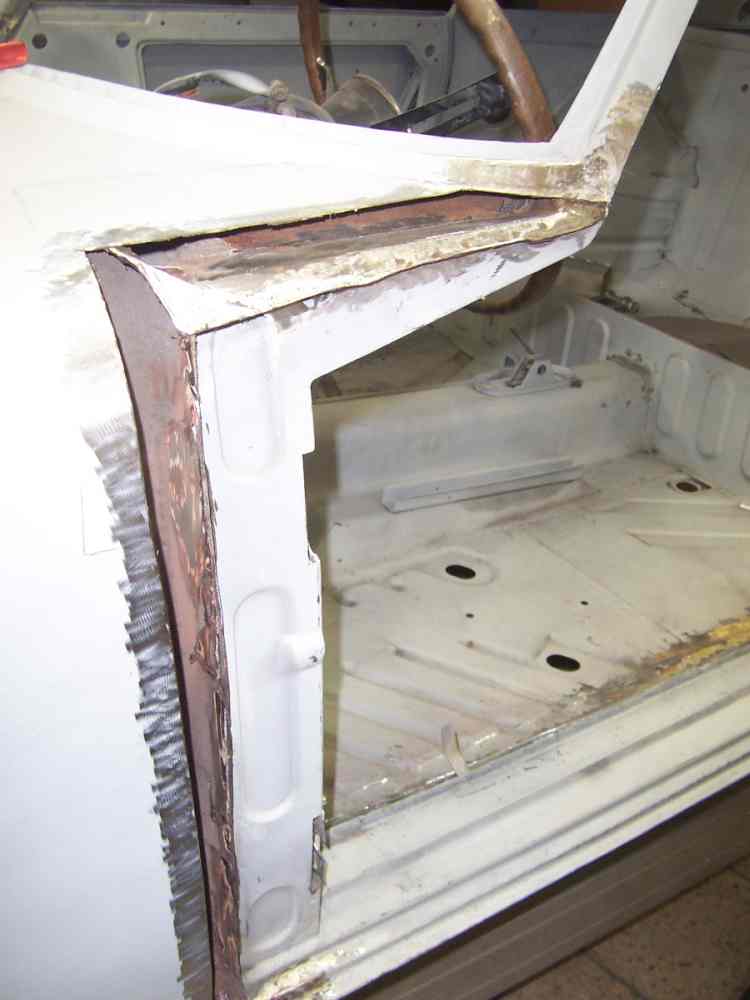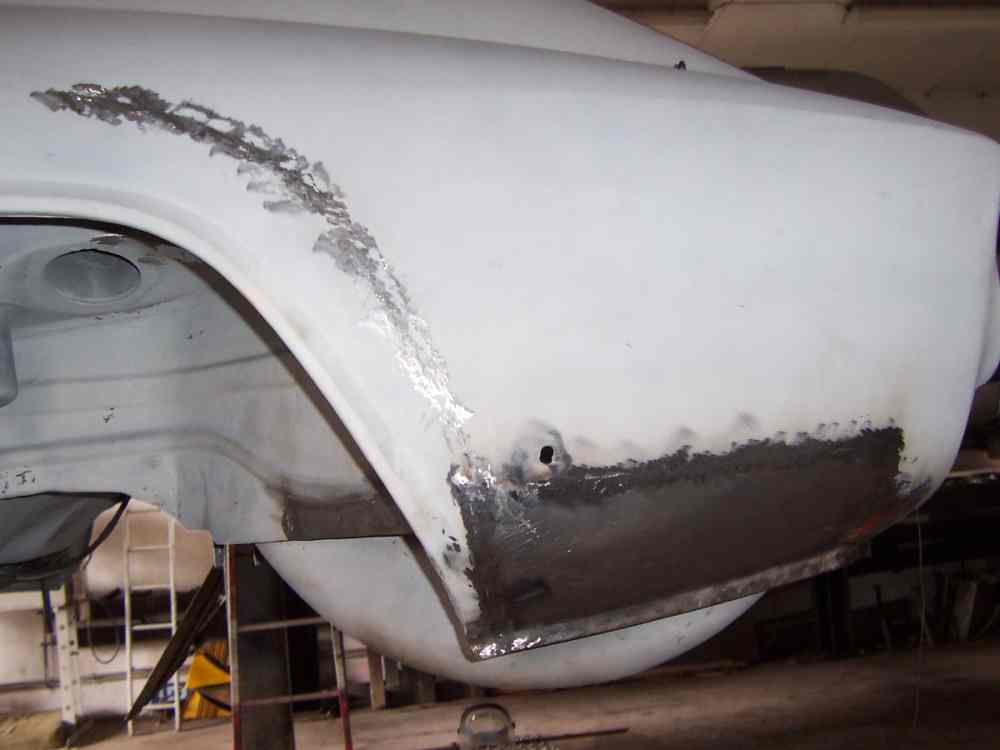The restoration of a BMW 1600 GT is like that of a GLAS GT Coupé, or the convertible. Therefore, in this article, it is often referred to the restoration of a GLAS GT convertible. Especially bodywork is remarkably similar. But let us start here as well with the history of the car.

In 2011, Elliot Schnackenberg from the USA purchased the BMW 1600 GT from Sweden through the mediation of friends from Germany. Despite the alleged condition 2, he had the coupé completely restored by restoration company Matejcec in Pilsen, in the Czech Republic. Matejcec was kind enough to provide us with many detailed photographs of the restoration.
The bodywork
As with the GLAS GT Cabrio, it is amazing how much corrosion there is not visible from the outside of the vehicle. The work required on the GLAS GT Cabrio is not brought up again, but you can read about it at https://www.glasclub.de/index.php/de/glas-fahrzeuge/glas-gt/restaurierung?start=1
A-pillar
The A-pillar had been restored before, but you can clearly see here that the rust is still sitting under the sheet metal of the fender.
The whole area was sandblasted and new sheet metal welded in. Then everything was primed.
Often just the whole area around the A-pillar is very dilapidated. In any case during a thorough restoration the outer sheet metal skin should be removed and later re-attached or renewed.
The outer door skins
Water always runs down inside the doors. At the bottom there are drain holes and there are also drain holes in the outer sills.This proofed to be not a highly effective design and after some years it always causes corrosion problems on the sills and doors.
The drain holes in the doors get blocked over time and the water accumulates at the bottom of the doors. Rust then forms and there are hardly any doors that are not rusted through at the bottom edg
Here in this case 10 cm from the bottom edge of the outer door skin were cut off and replaced by a new, fabricated section. Often the bottom of the door must be rebuilt as well.
But sometimes the doors are so bad, or have had damage from an accident, that one tries to find a door in better condition. The problem is that the doors were individually fitted to each vehicle in Italy and the appropriate body number was stamped into each door. If other doors are installed, considerable bodywork modifications must be expected.
Here you can see the renewal of the door bottom. Afterwards everything is sandblasted and primed again.
Then the outer skin is welded on to it. If you have done everything correctly, you should have peace and quiet here for many years.
Rear wheel arches
The rear wheel arches are also often rusted through. Since they are covered with a carpet, it is difficult to notice. They are wider than on the GLAS GT because the semi-trailing arm rear axle needs more space.
There are no reproductions and you must fabricate patches.
Miscellaneous
The body should be examined as closely as possible at all points, as there are different rust nests everywhere. It is helpful to remove paint by a dipping process or to dry ice blasting.
The painting



















